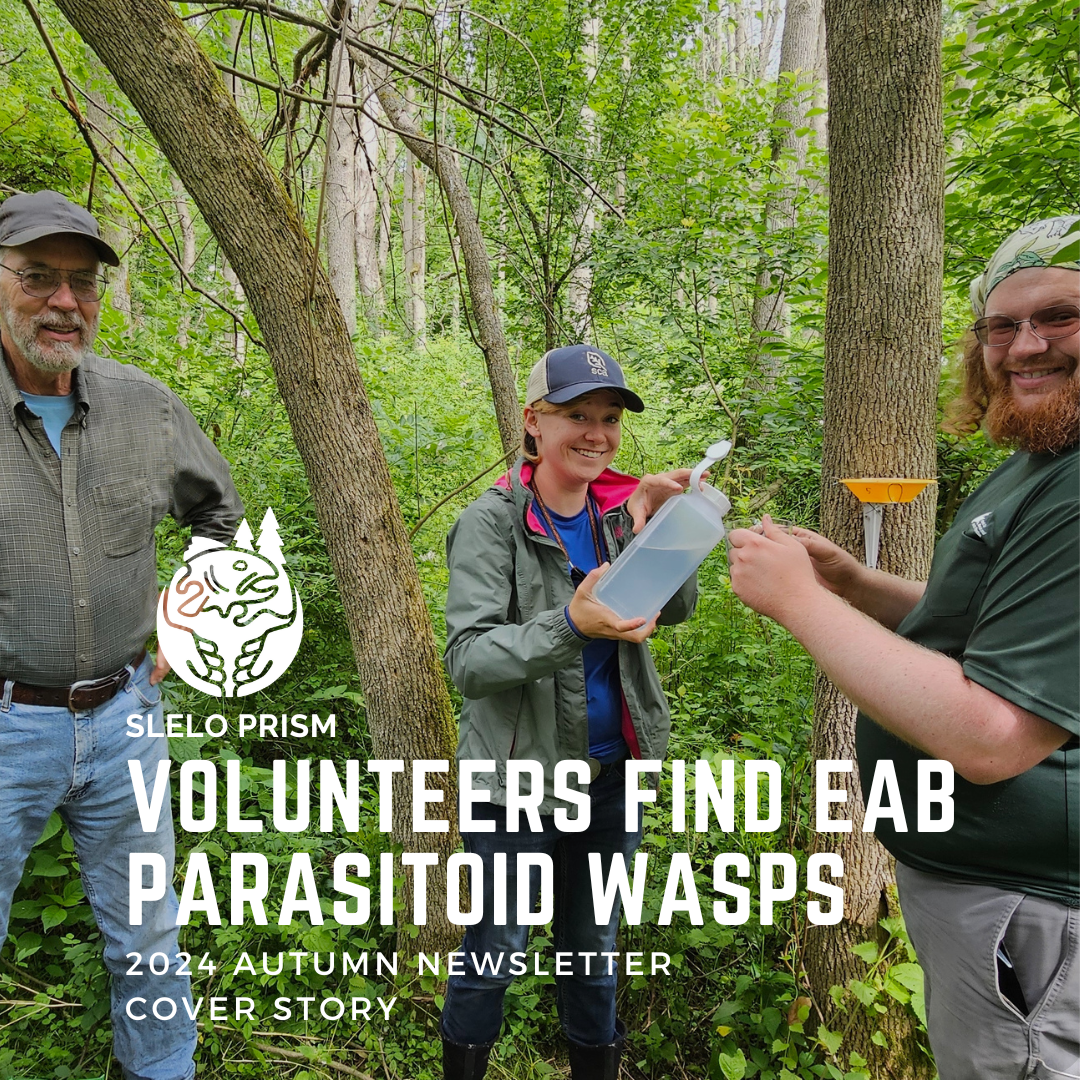This article was featured in the 2024 Autumn Newsletter by, Megan Shaw & Robert Smith-SLELO PRISM.
In 2022 and 2023, we released three species of emerald ash borer (EAB) parasitoid wasps at SUNY Oswego Rice Creek Field Station as part of the USDA’s EAB Biocontrol Release Program. Total parasitoid wasps by species released were 2,347 Spathius galinae, 5,652 Tetrastichus planipennisi, and 2,200 Oobius agrili for a total of 10,199 parasitoid wasps released. To determine if these wasps are establishing a population, we followed up the releases with an EAB biocontrol establishment survey.



The survey involved installing 15 yellow pan traps on 15 different ash trees located across the area that we previously released the wasps. These traps consist of two plastic yellow bowls placed over each other and mounted to a tree. A 20% clear solution of propylene glycol and a small quantity of clear dish soap are placed in the top bowl. The top bowl has a filter where excess fluid during rainy period flows out into the bottom bowl. The color yellow attracts many insects including the parasitoid wasps that we are looking for, so insects are lured toward the trap, land in the solution and drown. The dish soap breaks the surface tension, not allowing them to land on the surface. The Propylene glycol that is in the pan is food grade and can be poured on the ground and will preserve the caught insects for about a week.
From June 5th through September 25th, rain or shine, a group of dedicated volunteers and SLEO staff monitored the traps weekly to collect trap specimens, refill the traps with the solution, and view specimens under a microscopes in the lab. All insects suspected of being an EAB parasitoid wasp were placed in a vial and sent to a USDA APHIS Lab in Michigan for verification.


Sixty out of the sixty-eight potential EAB parasitoid wasps found in traps that were sent to the USDA APHIS have been evaluated. Fourteen of the trap specimens were confirmed as being the species we released during the last two years (2 oobius, 11 spathius, 1 Tetrastichus). This shows that the wasps can overwinter and is a good sign that they can become established, bringing hope for protecting ash tree species from emerald ash borer!
This was the longest running SLELO volunteer effort lasting 17 weeks, with 28 volunteers who contributed 357 volunteer hours! Thank you to the many committed volunteers, SUNY Oswego Rice Creek Field Station, and Oswego Soil and Water Conservation District for supporting this project; thank you to USAD APHIS for supplying the EAB parasitoid wasps and analyzing our specimens. View a video showcasing this project on Facebook Instagram or YouTube.
We’re recruiting volunteers for the summer of 2025 to complete year two of the EAB Biocontrol Monitoring Project.
No experience is needed and guidance will be given during each monitoring survey.

Please fill out the form below to be added to our listserv and receive our seasonal newsletter, event invitations and other announcements.


